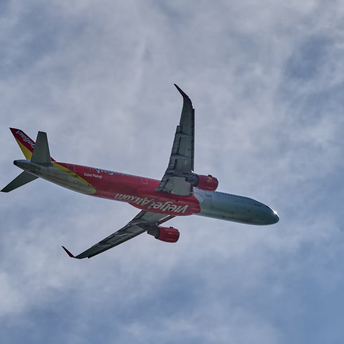Safety at Altitude: How Airplane Doors Stay Shut

Flight safety often sparks interest among passengers, and one of the most common myths is the possibility of opening airplane doors mid-flight. While the mechanism to open doors is technically accessible to anyone, doing so in practice is impossible due to physical constraints.
Commercial airplanes typically fly at an altitude of about 30,000 to 38,000 feet (approximately 9-11 kilometers). At this height, the air is significantly thinner, and the pressure inside the airplane is maintained artificially. Outside the cabin, the pressure is much lower, creating a significant difference between the internal and external pressures. This difference is the key factor that prevents the doors from opening. To open a door at such an altitude, one would have to overcome a force equivalent to lifting over 9,000 kilograms, making it physically locked.

The primary reason airplanes fly at such high altitudes is to save fuel and reach their destinations faster. At around 10 kilometers, the air is less dense, reducing drag and allowing engines to operate more efficiently. This not only decreases fuel consumption but also minimizes exposure to turbulence, which is more common at lower altitudes.
Cabin Pressurization: Why Is It Important?
Cabin pressurization is essential to maintaining comfortable and safe conditions for passengers. At high altitudes, the oxygen level in the air is insufficient for normal breathing, and without pressurization, a person would lose consciousness within minutes. Air is supplied to the cabin through a compression system, which takes it from the surrounding atmosphere and heats it. This process ensures the oxygen and pressure levels necessary for normal functioning.
Historical Incidents and Safety Lessons
Despite the high level of safety, history has seen instances where issues with pressurization led to tragedies. For example, in 1988, on Aloha Airlines Flight 243, part of the airplane's roof was torn off at 24,000 feet due to metal fatigue and corrosion. This incident highlighted the importance of regular maintenance and the need to adhere to flight cycle limits.
Opening the Emergency Exit: Rare Cases
While airplane doors remain closed mid-flight due to physical laws, exceptions are possible. In May 2023, a passenger on an Asiana Airlines flight managed to open an emergency exit at a low altitude when the plane was already approaching landing. In such conditions, the pressure difference is minimal, which allowed the man to use the emergency exit. This incident sparked a broad discussion about the need for additional safety measures.
Air travel remains one of the safest modes of transportation. Modern technology, regular maintenance, and strict safety regulations provide reliable protection for passengers. Despite some incidents, thorough investigation of each case helps aviation become even safer, giving passengers more confidence when they are on board.



















